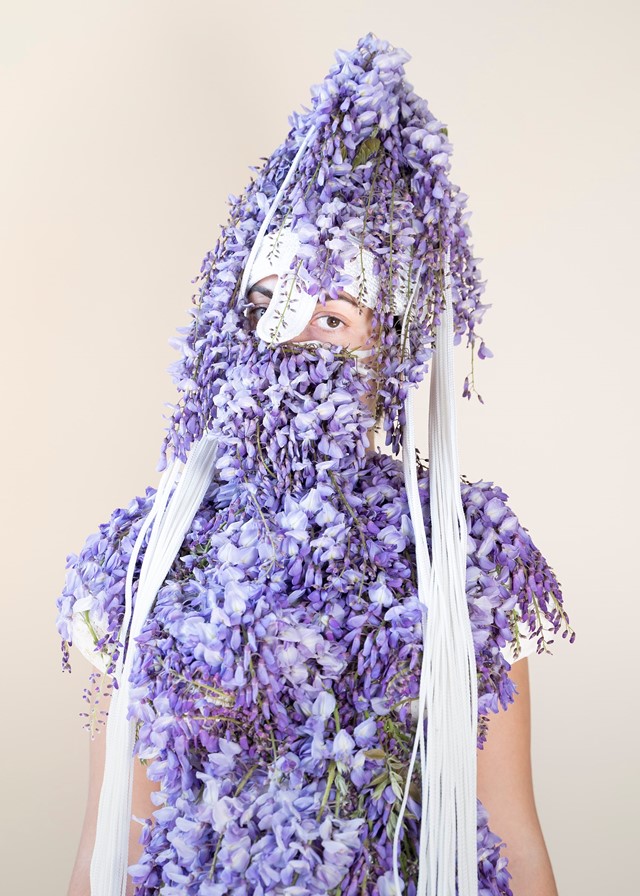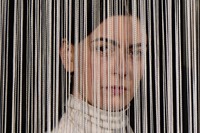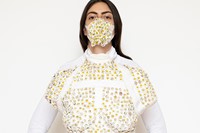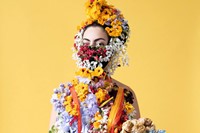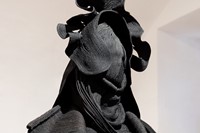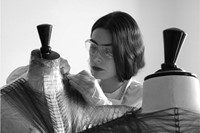The French artist-artisan, who has a background in fashion design, makes “anatomical armours” reimagining the history of femininity
- Who is it? Jeanne Vicerial is a French artist known for her textile sculptures of female “presences”, animated by performance, scent, and film
- Why am I interested? Vicerial’s work challenges both representations of female bodies throughout history, as well as the place of the individual within fashion systems
- Where can I see her work? In Hair and Hair at the Musée des Arts Décoratifs, Paris
Who is it? Growing up near a circus, French artist Jeanne Vicerial observed from a young age the power of clothing to move us between our inner and outer realities. “I would see people transition from themselves into character,” she explains, “and I think that’s what initially inspired me to study costume.” To study costume design was a way to learn the techniques of haute couture as well as the history of clothing, but what was missing was the creative freedom – and so at the end of her studies in costume she enrolled in fashion design at the Ecole des Arts Décoratifs, Paris.
What struck – and concerned – Vicerial was how fashion design was taught according to standardised sizing, reducing the complexities of the living body to a S-M-L size tag. “Somewhere along the way, I lost my relationship to the body,” she reflects, “and it’s at that moment that I began questioning the place of the individual within ready-to-wear clothing production.” Her graduate thesis, Un corps sur measure (A Body Made-to-Measure), examined this uneasiness between our individuality and the conformity of fashion systems, and considered that we already had made-to-measure clothing on us: our skin and the web of muscular fibres that lie beneath. For her graduate collection, Vicerial weaved a unique garment from a single length of thread – 150km long – which followed the anatomical patterns of these fibres.

Despite working for Hussein Chalayan and completing a PhD in practice-based fashion design, the idea of continuing a career in fashion didn’t feel right to Vicerial – “we already have enough clothing to last the next 100 years, I don’t need to add to that.” During a residency at the Villa Medici in 2020, she found her place as an artist-artisan, a fertile ground from which she could continue her research into textile and anatomy. “It was liberating to be surrounded by all these experienced artists,” she reflects, “I thought: why not start to make sculptures myself? Few people will read my thesis, but sculpture is a more accessible way to communicate my ideas.”
Why am I interested? At the centre of Vicerial’s work are female bodies – and notably a challenge to the ways they have been depicted throughout history and across various disciplines. “When I was in Italy, I discovered the Anatomical Venus, wax dissections of female cadavers which were always immortalised in a state of ecstasy or pleasure,” she explains. “There are no representations of pregnancies or abortions.” By using her now-patented method of tricotissage – a hybrid of knitting and weaving – Vicerial began to reimagine the history of femininity, creating sculptures of gorgons and corpses clad in black or ebony “anatomical armours.” Unlike ready-to-wear fashion, which suggests an outward conformity through its sizing models, her armours protect the women’s unique bodies – and the stories held within. “Although we can see the forms of their entrails, we can never know from the outside looking in whether they are fragile, whether they are nice, or whatever they may be.”

In December 2022, Vicerial created four sculptures of female figures that were exhibited amongst the statues of the kings and queens of France buried at the Basilica of Saint-Denis. Her idea was to “reanimate these recumbents, these lying bodies who are ready to get up and tell us their story.” Certain of her sculptures had open wounds – “scars left by history, by their place in society, in myths, tales and reality” – filled with varnished roses and peonies: their secret garden, within which their stories of pleasure and of pain intertwine. These sculptures then joined her “army of presences” for her recent solo exhibition Armors at Galerie Templon, Paris.
Although as part of her PhD Vicerial co-developed a robot capable of rapidly producing made-to-measure zero-waste clothing, these days most of her sculptures are made by hand. Some take several months to make, but “it’s this idea to place the emphasis on time – on taking the time and to not follow the frenetic pace of ready-to-wear fashion,” she explains. “I find it beautiful, this idea of taking six months to make one piece, rather than a whole collection every couple of months.”
To “give her sculptures life,” Vicerial collaborates with other creatives, such as the perfumer Nicolas Beaulieu, with whom she has worked for the past eight years to create a unique scent for each of her shows. Recently, dancer and fasciatherapist Julia Cima has helped produce movement-based performances to accompany the shows. “It’s as though my sculptures are people. They sing, they dance, they smell, they eat, they are shy,” she muses. “I like this idea that we don’t know from which period they come from – if they are from the past or from a far-off future. But it’s just that we know that they are here.”
Where can I see her work? Jeanne Vicerial’s work is currently on show as part of Hair and Hair at the Musée des Arts Décoratifs, Paris.
